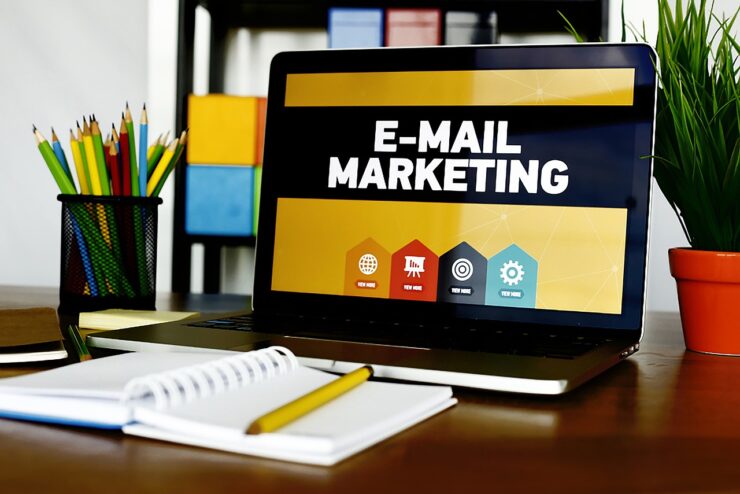Arranging a mailing list is a complicated but necessary task for any email marketing campaign. It empowers users to articulate with your viewer by categorizing people into different subgroups according to their interests, behavior, and demographic information and aids in delivering your email messages. Email list providers include various sophisticated options that make one such procedure even relatively easy. By utilizing such a service provider, you can computerize your marketing email to reach your target market at the most effective times, even while creating aimed and highly personalized emails that are more likely to be responded to.

Additionally, by keeping your email list organized, you’ll be capable of tracking the achievement of one email marketing campaign and gaining insightful knowledge about the habits of your audience. This permits you to make statistics choices regarding future initiatives, allowing you to optimize one’s email campaign strategy to achieve better results. You can also employ A/B testing to test separate topic lines, everything from, and having to send times to see what works best for your audience.
6 Tips For Beginners To Organize An Email List-

Organizing an email list is a complex task that requires a strategic approach to ensure the success of your email marketing campaigns. Here are 6 tips for beginners to arrange
- Segment your email list: By segmenting your email list, you can group your contacts based on specific characteristics or behaviors, such as interests, demographics, purchase history, or email engagement. This allows you to send targeted and relevant messages to specific groups, which increases the chances of engagement and conversion.
- Clean your email list regularly: Keeping your email list clean is essential to ensure that your messages reach the right people. Invalid email addresses bounced emails, and unsubscribed contacts can all negatively impact the deliverability of your emails. By cleaning your list regularly, you can remove these contacts and improve the overall deliverability of your messages.
- Use email list providers: Email list providers such as Mailchimp, Constant Contact, Campaign Monitor, GetResponse, AWeber, ActiveCampaign, and Drip offer a range of features to help you manage your email list, automate your campaigns, and track your success. These providers can help you segment your list, clean it, create targeted and personalized messages, and automate your campaigns.
- Use sign-up forms: Sign-up forms are an effective way to collect email addresses and build your list. You can use forms on your website, social media, and in-store to capture contact information from interested parties.
- Encourage engagement: by regularly sending valuable and relevant content to your audience. This helps to build trust and establish a relationship with your audience, making them more likely to open up and engage with your emails in the future.
- Utilize A/B testing: A/B testing compares two versions of an email campaign to determine which one performs better. This can test different subject lines, email content, and sending times to determine what resonates best with your audience. Using A/B testing can help you optimize your email marketing strategy and improve the overall performance of your campaigns.
Benefits Of An Organized Email Lists

Organizing your email list is a multifaceted and intricate process that demands a comprehensive and strategic approach. By effectively utilizing the advantages of segmentation, deliverability, data-driven decision-making, relationship building, automation, and cost-effectiveness, you can communicate with your audience in a more efficient manner, enhance conversions, and ultimately boost revenue for your business.
Organizing your email list includes several key steps, such as cleaning your list regularly, using email list providers, creating sign-up forms, fostering engagement, and implementing A/B testing. By strategically executing these steps, you can optimize your email marketing strategy, improve the effectiveness of your email campaigns, and gain a competitive edge in the marketplace. An organized email list can provide several benefits for your business or organization, including:
- Targeted and Personalized Messaging: By segmenting your email list, you can create targeted messaging that is highly relevant and personalized to specific groups of people. This allows you to communicate with your audience more effectively and increase the chances of engagement and conversion. Segmentation can be based on various factors such as demographics, interests, purchase history, and engagement with previous email campaigns.
- Improved Deliverability: Cleaning your email list regularly can help improve your emails’ overall deliverability by removing invalid email addresses, bounced emails, and unsubscribed contacts. This ensures that your messages reach the right people, which can increase the chances of engagement and conversion.
- Better Insights and Data Considered Decision Making: Organizing your email list allows you to track the success of your campaigns and gain valuable insights into your audience’s behavior. This enables you to make data-driven decisions about your future campaigns and optimize your strategy for better results. This can help you to understand what works well and what doesn’t work well and make adjustments accordingly.
- Firmer Connections with your Viewing public: Visitors can build stronger connections with your target audience as well as enhance brand loyalty whilst also adapting your communications by making it more personalized but also meaningful to each group. Your email list can be segmented to achieve this, and messages tailored to the preferences and conduct of each group can be developed.
- Enhanced Return on investment: A very well email could indeed result in higher involvement, greater conversion rates, and a higher ROI for your marketing campaigns through email. You could indeed increase the likelihood of interaction and transformation, which could also eventually result in more sales for your company, by selecting the right audience to whom you will send pertinent and personalized texts.
- Digitization: Personalized email companies start providing additional features that can assist readers in sending computer controlled and personalized communications to one’s viewers at the opportune moment. By doing this, you could save time and effort while making sure that one’s messages get to their viewing public at the most suitable times.
- Cost-effective: Marketing automation is one of the expenses effective marketing channels, and having a well-organized mailing list can aid you in getting the most from the email marketing spend. Users can boost the likelihood of participation and transformation by targeting the appropriate audience and sending targeted and personalized messages that will eventually force that much revenue to your company. Furthermore, by utilizing digitization and monitoring the accomplishment of your initiatives, users can optimize one’s approach for positive performance.
Conclusion
Trying to organize an email database is a difficult but necessary task for just about any email marketing. To ensure the effectiveness of your advertisements, it is a multistep concept that necessarily involves a strategy. Visitors could send targeted and personalized messages to your audience that are more likely to be interacted with by segmenting your list according to specific traits or behaviors, like preferences, demographic information, buying patterns, or electronic mail interaction. Furthermore, washing your email database on a routine basis and expelling null and void email accounts, undeliverable email messages, and stopped participating connections could significantly improve timely delivery.

